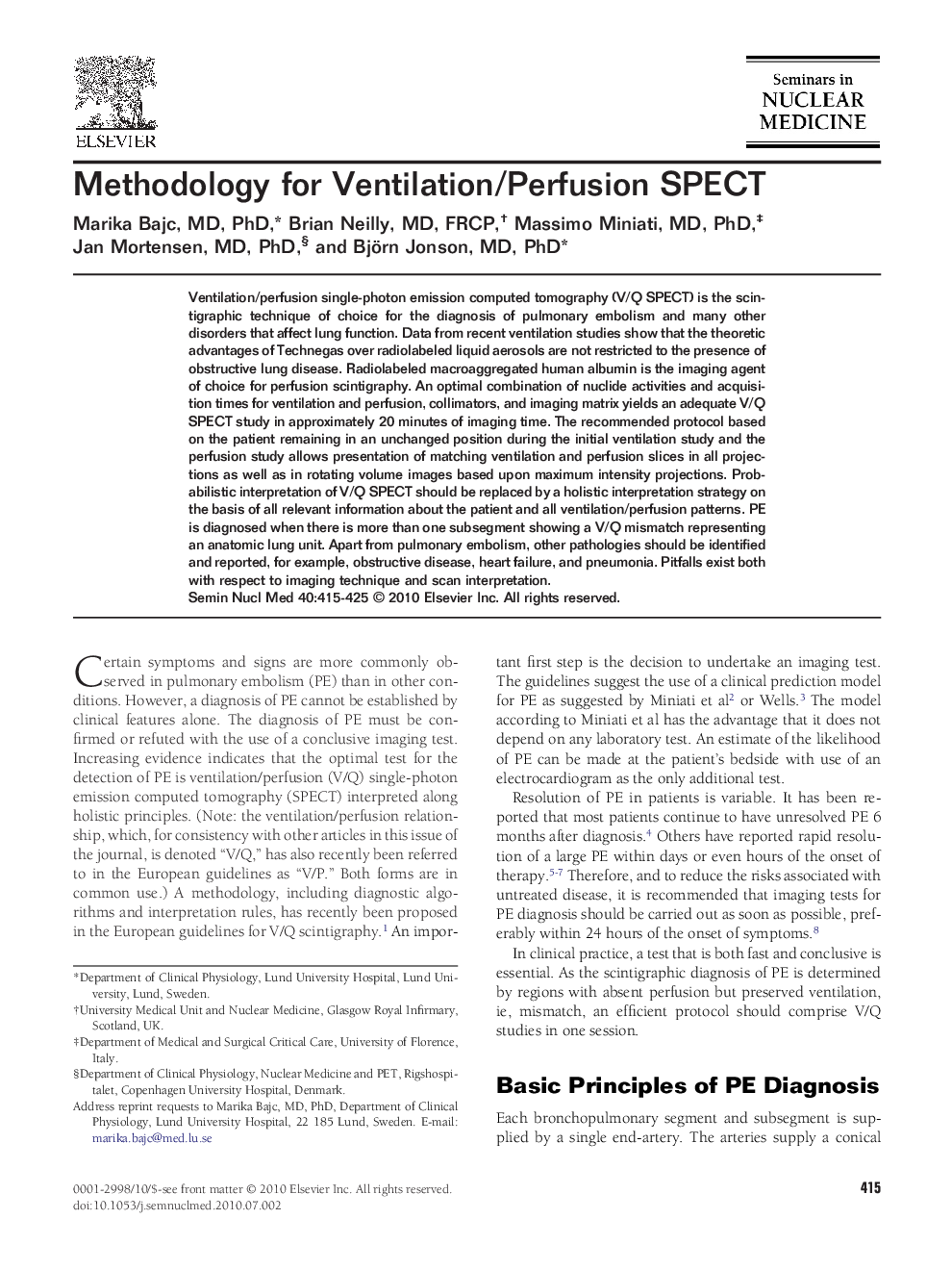| Article ID | Journal | Published Year | Pages | File Type |
|---|---|---|---|---|
| 4251125 | Seminars in Nuclear Medicine | 2010 | 11 Pages |
Ventilation/perfusion single-photon emission computed tomography (V/Q SPECT) is the scintigraphic technique of choice for the diagnosis of pulmonary embolism and many other disorders that affect lung function. Data from recent ventilation studies show that the theoretic advantages of Technegas over radiolabeled liquid aerosols are not restricted to the presence of obstructive lung disease. Radiolabeled macroaggregated human albumin is the imaging agent of choice for perfusion scintigraphy. An optimal combination of nuclide activities and acquisition times for ventilation and perfusion, collimators, and imaging matrix yields an adequate V/Q SPECT study in approximately 20 minutes of imaging time. The recommended protocol based on the patient remaining in an unchanged position during the initial ventilation study and the perfusion study allows presentation of matching ventilation and perfusion slices in all projections as well as in rotating volume images based upon maximum intensity projections. Probabilistic interpretation of V/Q SPECT should be replaced by a holistic interpretation strategy on the basis of all relevant information about the patient and all ventilation/perfusion patterns. PE is diagnosed when there is more than one subsegment showing a V/Q mismatch representing an anatomic lung unit. Apart from pulmonary embolism, other pathologies should be identified and reported, for example, obstructive disease, heart failure, and pneumonia. Pitfalls exist both with respect to imaging technique and scan interpretation.
